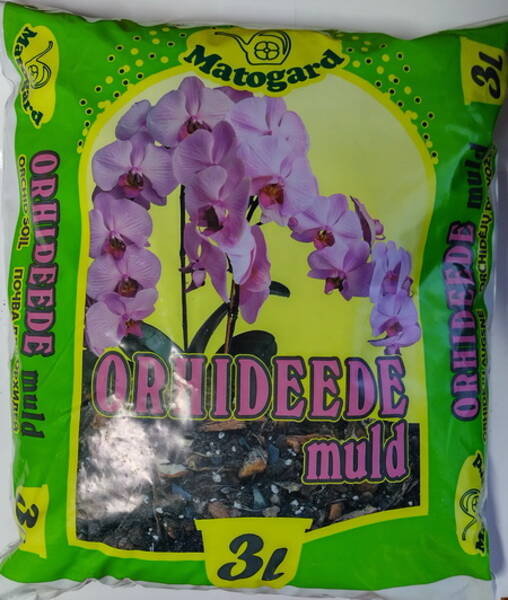For transplanting orchids and other epiphytic plants, a soil was created, the composition of which provides good water permeability, friability and a favourable air regime for the soil.
Soil composition: peat 50%, tree bark 30%, charcoal 5%, compost 5%, perlite 5% and expanded clay 5%, coconut fibre.
The easiest way to buy an orchid substrate is ready-made, but you can also cook it yourself (in this case, you can also include dry mullein, nutshells, and crushed oak leaves).
Recently, there has been a trend to grow orchids on an artificial substrate. Expanded clay is especially popular. Previously, this light and porous material were used only for drainage. Today, it is he who has become widespread as the main filler. But it should be understood that the granules accumulate tap water salts in themselves, and when the roots grow on expanded clay, they absorb harmful substances. Another minus of expanded clay is that the material dries out quickly and begins to take moisture away from the roots. But if you like to water your plants often, then a similar substrate is the perfect solution.
Orchid care after transplantation.
The main principle of caring for a tropical plant after moving to a new area is to give it time to adapt. The question of how to water an orchid after a transplant deserves special attention. If you washed the roots and cleaned them from the old substrate, then you should not re-water the flower in a new pot. Resume watering after 5-7 days. During this period, only spraying is allowed.
During adaptation, it is better to place the orchid in a shaded place and take it out into the light in a week. The optimum temperature for getting used to the new container is +20+22 °C.
You can fertilize a transplanted orchid no earlier than a month later.
* Planting too deep will cause the buds to rot. And planting too high will make the orchid pot unstable, which can lead to accidental damage to the stems.















